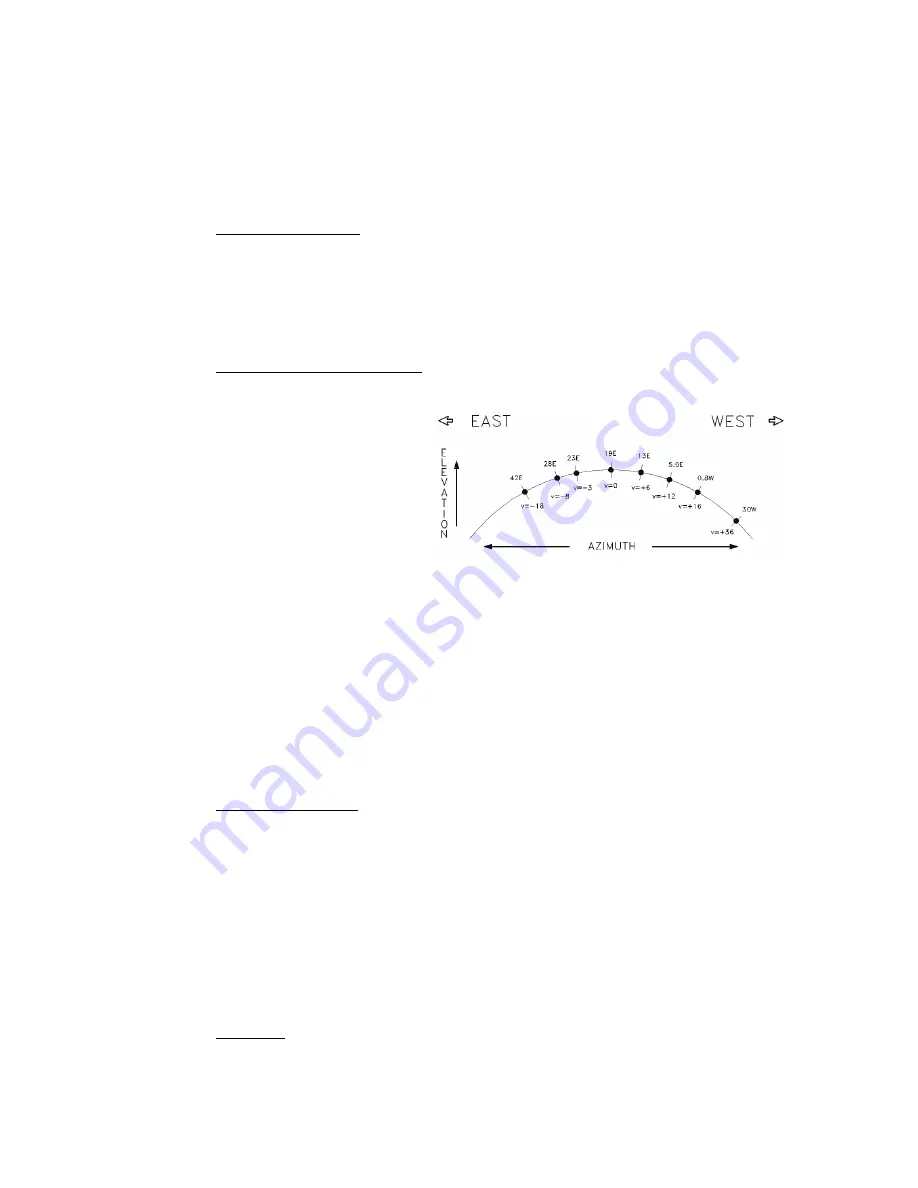
Basic System Information
9497B-1 C/Ku-Band TVRO
3-2
Figure 3-1 Satellite Signal Polarization
satellite signal level required for your size of antenna (refer to the Specifications section of this manual) to
provide suitable reception. This limits the number of satellites that can be used and the geographic areas
where the ship can travel where the signal level is expected to be strong enough to continue providing
uninterrupted reception. When traveling outside this minimum signal coverage area, it is normal for the
system to experience an interruption in its ability to provide the desired satellite services until entering (or re-
entering) an area of adequate signal level.
3.1.6.
The focused beam(s) from the satellites are normally aimed at the major land masses where there are large
population centers. Footprint charts graphically display the signal level expected to be received in different
geographic locations within the area of coverage. The signal will always be strongest in the center of the
coverage area and weaker out toward the outer edges of the pattern. The coverage areas are intended to be
a guide to reception, however, the actual coverage area and signal level and vary. Also the signal strength is
affected by weather.
Satellite Footprints
3.1.7.
Satellites may transmit their signals in
one of two different polarization
modes. The feed installed on your
antenna must be designed to operate
with linear polarized satellite
transmissions.
Linear Satellite polarization
Circular polarized satellite
transmissions do not require
polarization adjustment to optimize
the reception.
Linear polarized satellite transmissions
require periodic adjustment of
“polarization” to optimize the
alignment of the LNB to the angle of the signal from the satellite.
When you are at the same longitude as the satellite, its’ horizontal and vertical signals will be aligned to your
local horizon. When you are east or west of the satellite, the signals will appear to be rotated clockwise or
counter-clockwise from your local horizontal and vertical. Both horizontal and vertical signals from a satellite
will appear to be rotated the same amount and are always perpendicular to each other. The amount of
rotation is dependent on how far east or west you are form the satellite and how close you are to the
Equator.
3.2.
Antenna Basics
The following information is provided to explain some of the basic functions of the antenna:
3.2.1.
Azimuth rotation of the antenna is unlimited (no mechanical stops). Azimuth drive, provided by the azimuth
motor, is required during stabilization, searching and tracking operations of the antenna. When the ship turns,
azimuth is driven in the opposite direction to remain pointed at the satellite. The actual azimuth pointing
angle to the satellite is determined by your latitude & longitude and the longitude of the satellite. It is
important to know that the antenna should be pointed (generally) toward the equator.
Unlimited Azimuth
The azimuth angle to the satellite would be 180 degrees true (relative to true north) if the satellite is on the
same longitude that you are on. If the satellite is east, or west, of your longitude the azimuth will be less than,
or greater than 180 degrees respectively.
When checking for blockage you can visually look over the antenna radome toward the equator to see if any
objects are in that sighted area. If you are not able to find any satellites it may also be useful to remove the
radome hatch to visually see if the dish is aimed the correct direction (towards the equator).
3.2.2.
In normal operation the elevation of the antenna will be between 00.0 (horizon) and 90.0 (zenith). The
antenna can physically be rotated in elevation below horizon and beyond zenith to allow for ship motion.
Elevation drive, provided by the elevation motor, is required during stabilization, searching and tracking
Elevation
Summary of Contents for 9497B-1
Page 3: ......
Page 28: ...Installation 9497B 1 C Ku Band TVRO 4 10 This Page Intentionally Left Blank ...
Page 66: ...Model 9497B 1 Drawings 9497B 1 C Ku Band TVRO 9 2 This Page Intentionally Left Blank ...
Page 68: ......
Page 70: ......
Page 73: ......
Page 75: ......
Page 76: ......
Page 78: ......
Page 80: ......
Page 82: ......
Page 84: ......
Page 87: ......
Page 88: ......
Page 92: ......















































